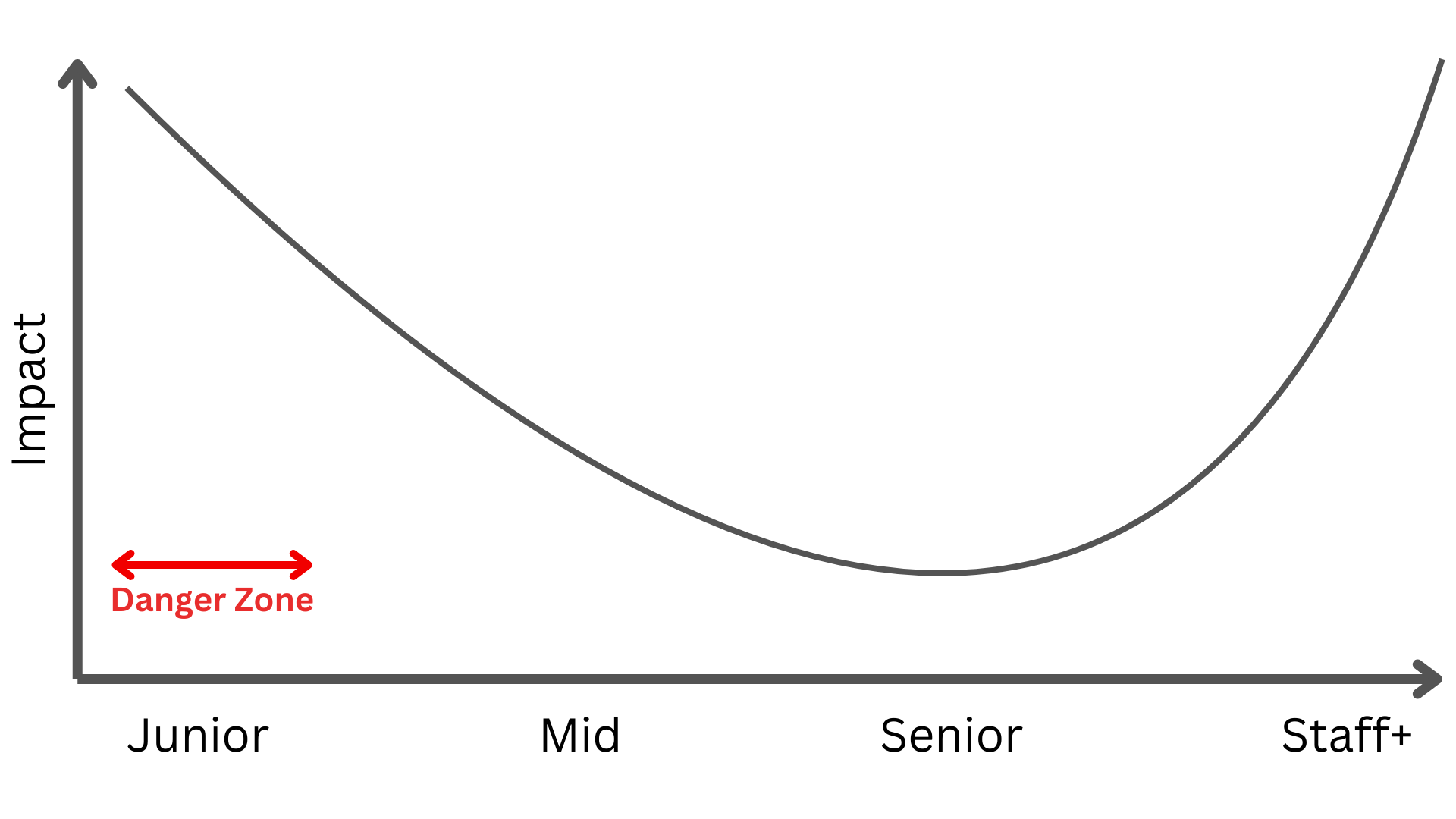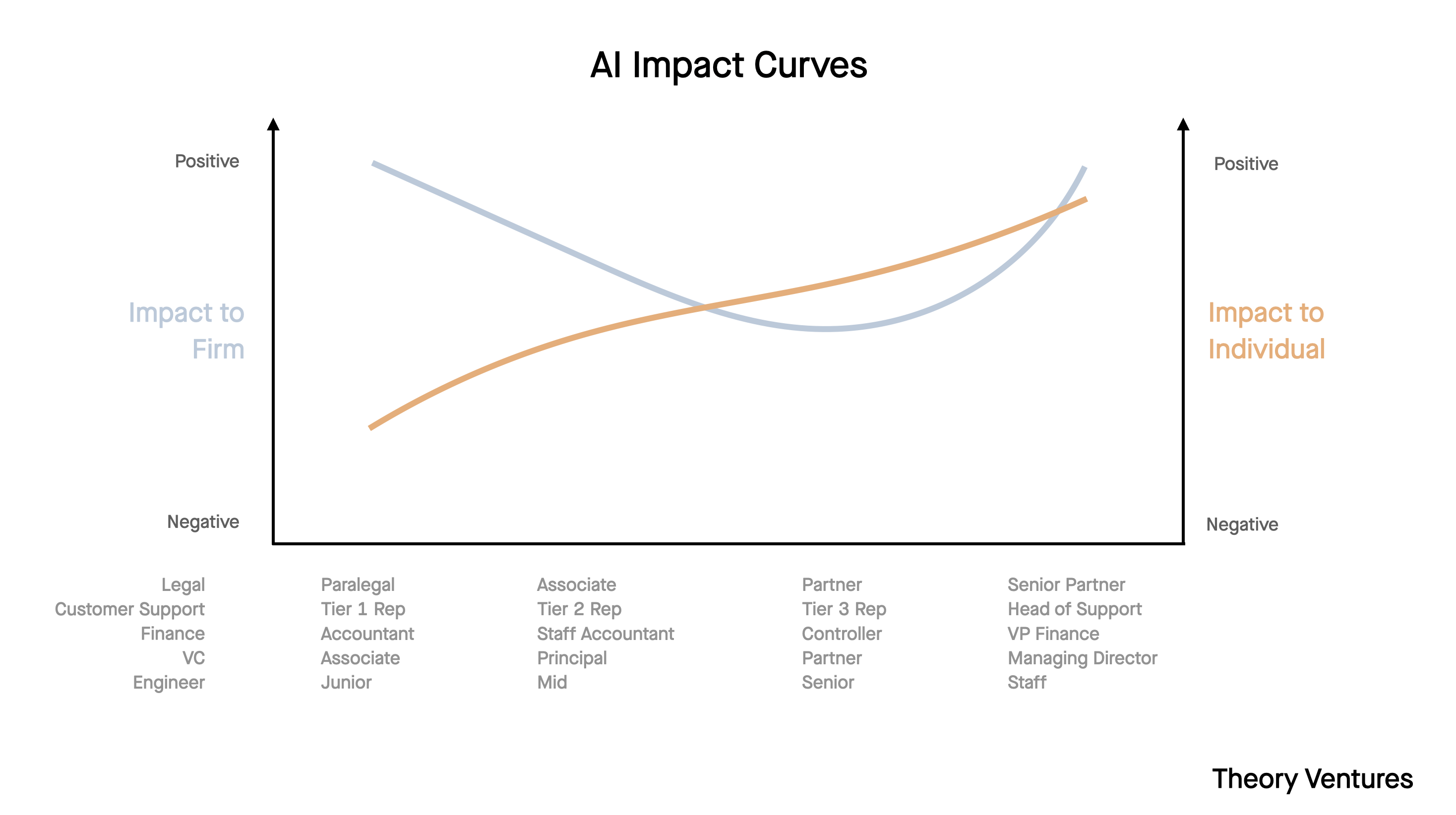What is the impact of AI across different levels of seniority?
Over the weekend, I read Sergey Tselovalnikov’s post on AI Impact Curves.

The software engineering curve reveals an intriguing pattern.
Junior engineers experience both benefits and risks from AI. Staff+ engineers also gain tremendous leverage at the senior end of the curve.
However, mid-level engineers see more modest impacts, primarily because they are proficient with their codebases and can write effective code adeptly.
I wondered about other disciplines : law, accounting, customer support financial analysis, consulting.
I found myself drawing a chart with two y-axes instead : impact on the individual and impact on the business. Because they could be quite different.

At the junior level, there’s a meaningful difference between the impact on an individual and an impact on a company. A junior person is much more likely to find their job or at least portions of it automated by more experienced colleagues employees moving up the organization - presuming they embrace AI.
The owners of a business or the leaders of a business would find themselves benefiting from the efficiencies of AI driving greater profitability with potentially somewhat negative expense of managing smaller teams.
Business leaders benefit from increased productivity & potentially reduced team sizes.
But even this dual curve model is too simplistic. The real differentiator could be adaptation ability rather than seniority.
A junior employee who masterfully leverages AI creates outsized value for both themselves and the organization - a truth that holds across all roles and levels.